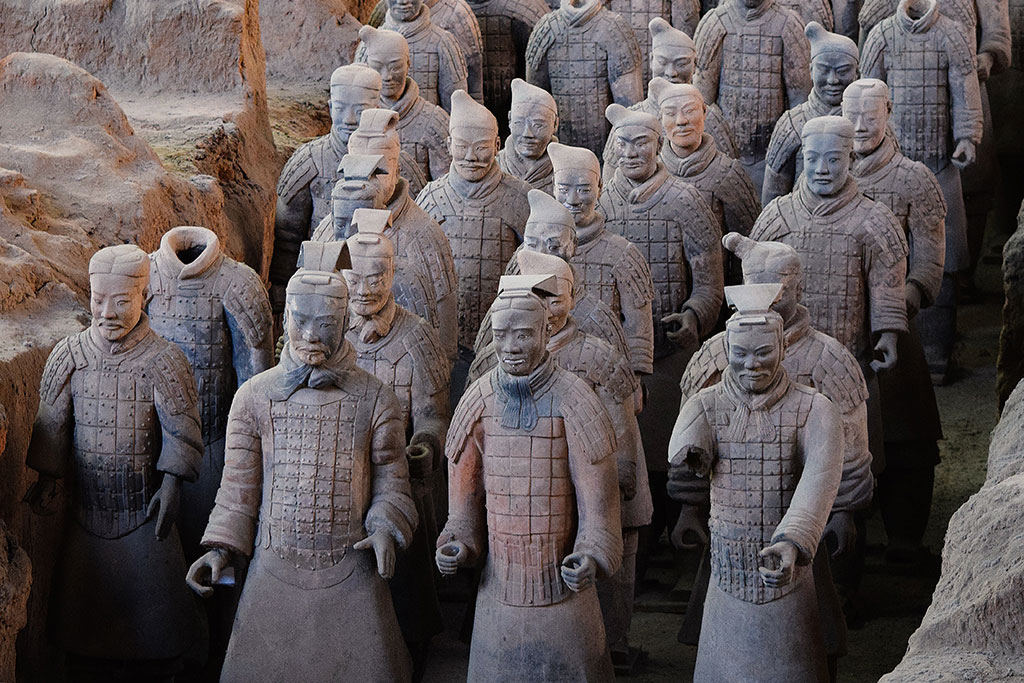Archaeologists have excavated another 200 terracotta warriors in China’s Shaanxi province close to the mausoleum of the country’s first emperor, Qin Shi Huang, who was also responsible for having the Great Wall of China built.
This funerary art was buried with the emperor when he died in 210 BC as a means to protect him in the afterlife.

China’s terracotta warriors. Image credit: Aaron Greenwood
The first of these figurines was discovered by farmers digging a well in 1974 and so far about 2,000 soldiers have been excavated. It’s believed that there are around 7,000 of these warriors.
According to state-run news agency, Xinhua the newly unearthed warriors have remarkable individualistic features and each soldier’s rank is indicated by details on his armour and clothing. The terracotta figurines were sculpted into two positions: either holding bows, with their right arms relaxed or carrying pole weapons, with their right arms bent and fists half clenched.
The Smithsonian magazine reports that ‘archaeologists also discovered a trove of other relics, among them 12 clay horses, the remains of two chariots, coloured shields, bronze swords, bows, weapons stored in boxes and traces of building sites.’
The new group of life-sized warriors was discovered during a 10-year-long excavation of ‘Pit 1’ – the largest of four burial pits in the area.
Image: Aaron Greenwood
You may also like
Related Posts
China’s National Health Commission has published a list of controversial coronavirus treatments that have animal...
read more
Warmer sea temperatures in the summer months, especially in February, were recorded and are believed...
read more
The latest report indexing the world's happiest countries has highlighted the important role of...
read more